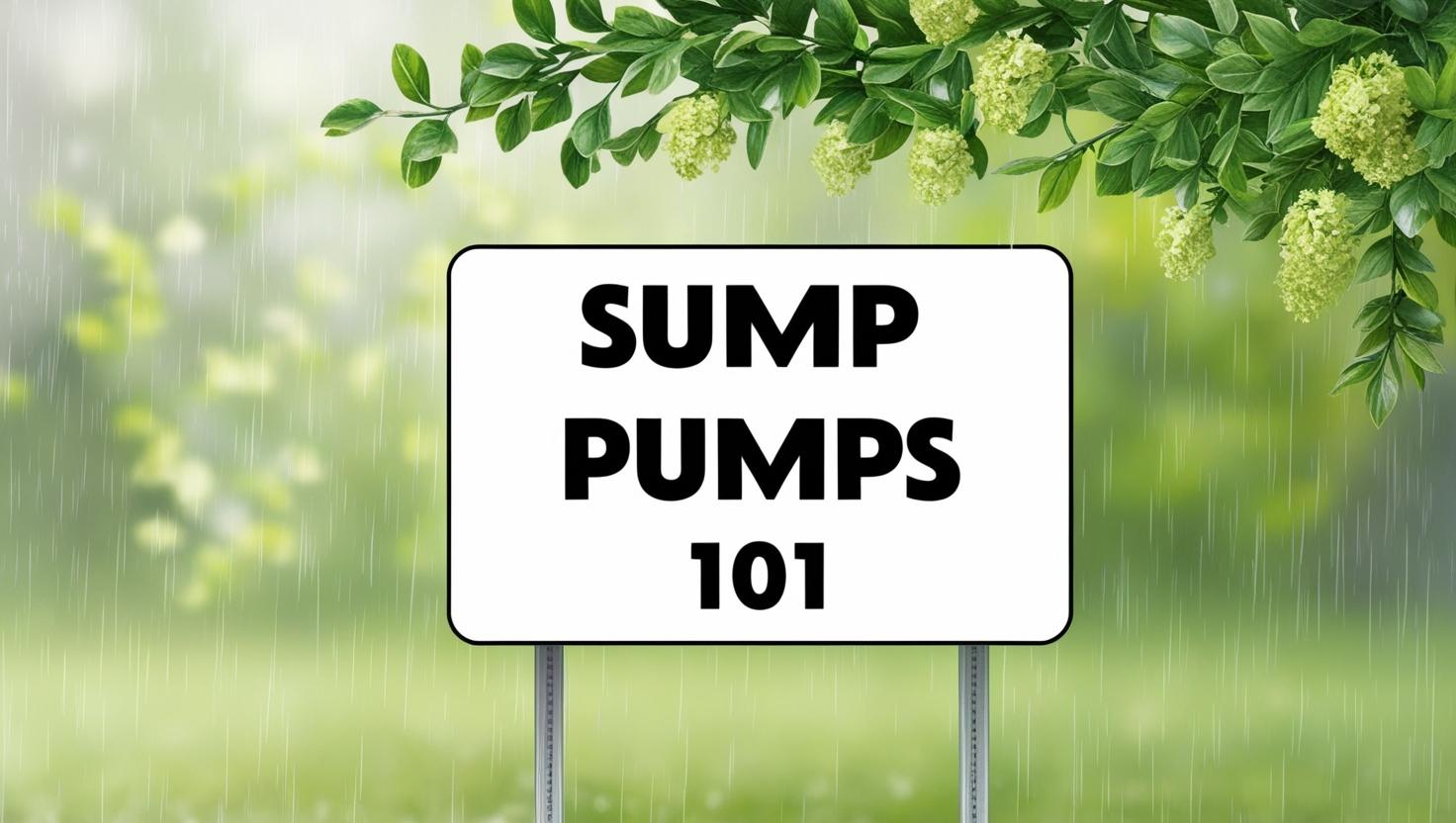A sump pump is a vital line of defense for protecting your basement and home from flooding. Whether you’re dealing with heavy spring rains, rising groundwater, or unexpected plumbing leaks, a properly functioning sump pump can prevent costly water damage and keep your home dry.
In this in-depth guide, we’ll cover everything you need to know about sump pumps—from how they work, the different types available, installation tips, and maintenance practices, to signs that your sump pump needs professional attention.
✅ What Is a Sump Pump and How Does It Work?
A sump pump is a small, submersible device installed in the lowest part of your basement or crawl space. Its purpose is to pump excess water away from your home’s foundation and direct it to a safe location, such as a storm drain, dry well, or municipal sewer line.
Here’s how it works:
Water collects in the sump pit: Rainwater or groundwater naturally drains into the sump pit (also called a sump basin), which is a small hole dug into the floor.
Float switch activates the pump: As water levels rise, a float switch triggers the pump to turn on.
Water is discharged away from your home: The pump moves water through a discharge pipe, directing it safely away from your foundation.
Without a sump pump, water can accumulate under your home, causing flooding, mold growth, and even structural damage.
🔥 Why Are Sump Pumps Important?
If you live in an area prone to heavy rain, snowmelt, or high water tables (like parts of New Jersey and Pennsylvania), a sump pump is essential. Here’s why:
Prevents basement flooding: Sump pumps remove excess water before it accumulates, protecting your basement and belongings.
Reduces mold and mildew risk: Keeping your basement dry prevents mold and mildew growth, which can harm indoor air quality.
Protects your home’s foundation: Continuous exposure to water can weaken your foundation. A sump pump reduces this risk by keeping water away.
Increases property value: Homes with flood protection systems, such as sump pumps, are often more attractive to buyers.
⚙️ Types of Sump Pumps: Which One Is Right for You?
There are several types of sump pumps, each suited for different needs and budgets.
🛠️ 1. Submersible Sump Pumps
Design: The pump and motor are fully submerged in the water inside the sump pit.
Best for: Homes with frequent or heavy water intrusion.
Advantages:
Quieter operation.
More powerful pumping capacity.
Longer lifespan (typically 7–10 years).
Drawbacks:
More expensive than pedestal pumps.
Requires a larger sump pit.
🔧 2. Pedestal Sump Pumps
Design: The pump’s motor is mounted above the sump pit, with a hose leading down into the water.
Best for: Areas with occasional flooding or homes with smaller sump pits.
Advantages:
More affordable.
Easier to repair and maintain.
Drawbacks:
Noisier operation.
Shorter lifespan (5–7 years).
Less powerful than submersible pumps.
🔥 3. Battery Backup Sump Pumps
Design: Secondary pumps powered by a battery in case of power outages.
Best for: Homes in areas prone to power outages or heavy storms.
Advantages:
Ensures flood protection during power failures.
Provides added security.
Drawbacks:
More expensive.
Battery needs regular testing and replacement.
💡 4. Combination Sump Pumps
Design: A primary pump paired with a backup pump, typically battery-powered.
Best for: Homeowners seeking maximum protection.
Advantages:
Reliable performance even during power outages.
Added peace of mind.
Drawbacks:
Higher upfront cost.
Requires more maintenance.
🔨 How Are Sump Pumps Installed?
While sump pump installation is best left to professionals, understanding the process can help you make informed decisions.
Installation Steps:
Select the location: The pump is installed at the lowest point in the basement where water naturally collects.
Dig the sump pit: The pit should be at least 18 inches wide and 24 inches deep.
Place the sump pump: The pump is positioned inside the pit, either submerged or mounted on a pedestal.
Connect the discharge pipe: The pipe carries water away from the foundation. It should lead at least 10 feet away from the house to prevent recirculation.
Install a check valve: A check valve prevents water from flowing back into the pit after the pump shuts off.
Test the system: The system is tested by pouring water into the pit to ensure proper operation.
🔧 Sump Pump Maintenance Tips
To keep your sump pump running efficiently, regular maintenance is essential:
Test the pump monthly: Pour water into the pit to activate the pump. Ensure it turns on and discharges water properly.
Clean the pit: Remove debris, dirt, or gravel that could clog the pump.
Inspect the float switch: Ensure the float switch moves freely. A stuck switch can prevent the pump from activating.
Check the discharge line: Make sure it is clear of obstructions and properly directed away from your home.
Backup battery check: If you have a backup system, test the battery regularly and replace it every 2–3 years.
⚠️ Common Sump Pump Problems and Solutions
Even a properly installed sump pump can encounter issues. Here are common problems and how to address them:
Pump won’t start:
Check for a stuck float switch.
Ensure the power cord is securely plugged in.
Test the outlet with another device.
Pump runs continuously:
The float switch may be stuck.
The check valve might be missing or malfunctioning.
Water discharge is weak:
The discharge pipe may be clogged.
The pump may be undersized for the volume of water.
Noisy operation:
The pump may have worn bearings or a loose impeller.
Pedestal pumps are naturally louder, but excess noise may indicate a problem.
🛑 When to Call a Professional
While some sump pump issues are easy to fix, others require professional assistance:
Frequent power failures or continuous running.
Signs of mechanical failure, such as grinding noises.
Significant water backup despite the pump operating.
At Applause Plumbing and Heating, we specialize in sump pump installation, maintenance, and repairs. Our expert team ensures your system functions reliably—protecting your home from costly water damage.
Protect Your Home with a Reliable Sump Pump
Don’t wait until heavy spring rains lead to basement flooding. Protect your home with a properly functioning sump pump. Whether you need a new installation, regular maintenance, or emergency repairs, Applause Plumbing and Heating is here to help.
📞 Call us today or request an estimate online!


